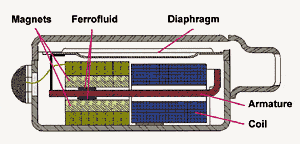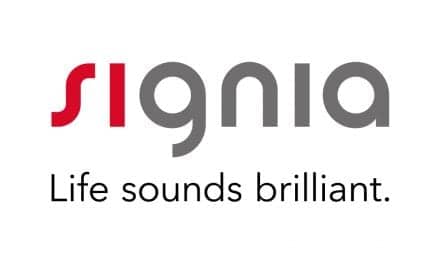Every opportunity creates new challenges. In the past few years, hearing care professionals have had the opportunity to offer their clients a wide range of new technology choices at an equally wide range of price levels. But this wealth of choices brings with it new challenges for hearing care professionals who are committed to actively involving their clients in the selection process. More specifically, dispensing professionals are asking:
- How can I help my clients make the choice that is best for them?
- How can I help them clearly see the benefits they will receive by investing in the best technology possible?
- How can I help them establish the appropriate expectations?
- How can I help them see that the value of hearing health care includes both the product and the professional services they receive?
New Approach to Client Involvement
Traditionally, informational materials on hearing aid benefits have focused on technology. Product-specific brochures or technology pyramids have been widely used to explain hearing benefits. Unfortunately, too much focus on specific hearing instruments can change the relationship with the hearing care professional from one that is consultative (ie, the client-advisor) to a transactional (ie, buyer-seller) relationship. This subtle change can have a long-term impact on the entire rehabilitative process, from technology decisions to fine-tuning and return rates.
In addition, this product-specific approach can confuse clients with the “technical” terminology used, the range of options available, and explanations relative to digital technology. For example, “digital” to some consumers means “best,” whereas many of today’s hearing instrument manufacturers offer premium-priced to quality digital technology at many different price levels. This confusion can lead consumers to delay making decisions, set unrealistic expectations, or settle for less than the optimal solutions.
To meet these challenges, a new generation of informational materials has been developed to support hearing care professionals. Client-Assisted Product Selection (CAPS), the tools described in this article, were developed by Oticon through a series of focus groups and workshops with leading hearing care professionals to determine the current “best practices” used to counsel clients through the purchase process. CAPS tools consist of a brochure, wall poster, and CD for staff training. Oticon also offers training sessions for hearing care professionals to help them integrate these tools into their practices.
Information Tools for Consumers
One key finding from the focus groups and workshops was the importance of developing tools that could be used selectively by hearing care professionals on an “as needed” basis to reinforce points they are making to clients. For this reason, the CAPS tools are designed to be extremely flexible, fulfilling the specific information needs of clients, and allowing hearing care professionals to customize the selection process for each client.
At the same time, the convenience of having a tool containing a comprehensive range of information relevant to the selection process was identified as a clear benefit for dispensing professionals. When working with clients, the CAPS brochure is designed to provide physical, hard copy information to support the client-advisor and counseling process. Ideally, it allows patients to understand complicated concepts, and the pictures give immediate credibility and validity to the points being made.
To date, over 8,000 hearing care professionals around the world have benefited from the new tools. Many report that the simple, easy-to-use materials enable them to provide critical information and guidance to their clients while actively engaging even the most timid or hesitant client in the selection process. Because the CAPS tools help minimize the potential for client confusion, the selection process moves quickly and successfully for both hearing care professionals and clients. For example, tools are available to visually demonstrate patients what digital hearing aids are or to explain the difference between high-end digital and economical digital.
Many professionals find CAPS tools valuable throughout the entire fitting process. In particular, some have found it to be especially helpful during post-fitting. For example, patients who are upset because they need to come back after the initial fitting are reminded by the program that hearing aid fitting is multi-visit process and that there will be ongoing adjustments over several weeks, if not months.

Dimensions of Hearing Improvement
The first step in the CAPS process is designed to help clients gain an understanding of the four dimensions of hearing improvement that should be addressed in creating an optimal solution for hearing (Figure 1). This includes:
- Determining an individual hearing profile, including what the client can hear well, and what the client has more difficulty hearing. A thorough hearing evaluation is the primary tool in this profile.
- Determining the situations that create the most problems for communication. This section is used to illustrate that the hearing evaluation only tells part of the story of an individual’s hearing abilities. If the professional is to help in selecting the most successful and satisfactory solutions, consumers need to get involved in helping the professional fully understand how hearing impacts their life.
- Understanding what technology is available, and how potential technology solutions relate to the needs and problems expressed by the patient.
- Dealing with practical considerations including client expectations and trade-offs consumers might choose in selecting a particular technology.

Treatment of Hearing Loss
The CAPS brochure includes numerous pictures and graphs explaining hearing loss, audiograms, and other aspects of hearing improvement (Figure 2). All are designed to help the hearing care professional educate consumers in a clear and concise way, and motivate clients to take action to improve their hearing.
For example, the findings of the landmark National Council on Aging (NCOA) study are summarized and provide powerful information to help consumers understand the dangers of untreated hearing loss. This information can be particularly useful in helping family members see the consequences of failing to treat a hearing loss appropriately.
Other CAPS tools can help consumers and their families recognize that even people with normal hearing have trouble hearing in environments with more noise or reverberation. A graph showing perceived satisfaction as listening situations become more difficult compares people with normal hearing, those wearing one hearing aid, and those wearing two hearing aids. This graph can be used by hearing care professionals to reinforce discussions of realistic expectations as well as the benefits of binaural amplification.
Exploring Options in New Technology
In the focus groups and workshops that led to the development of this program, successful dispensing professionals underscored the advantages of discussing technology first, before progressing to a discussion of specific hearing aids. By presenting technology options first, consumers can carefully consider each technology’s benefits in relation to their individual hearing loss. For hearing care professionals, this approach helps maintain their client-advisor role, rather than crossing the threshold into a buyer-seller relationship with too much emphasis on a particular product.
This also avoids the trap of talking about brand names and product features that the consumer ultimately does not choose for budgetary reasons. By introducing specific product discussions too early in the process, hearing care professionals may inadvertently emphasize desirable features of specific hearing instruments—instruments that may not be within the spending parameters of a particular client. As a result, consumers may purchase a hearing instrument that meets their budget but that they view as “second best.”

A number of dispensing professionals have found the CAPS’ categorization of digital technology levels (Figure 3) to be a useful alternative to the technology pyramid. One of the inherent disadvantages of a technology pyramid is that its design implies that the smallest number of people will choose the best technology. In contrast, the classification system shown in Figure 3 provides a variety of benefits and there are fewer value judgments about which is the optimal choice.
CAPS also includes a tool that encourages discussion to help the consumer make an informed choice about the practical considerations associated with choosing a hearing instrument. Clear easy-to-follow graphics depict those topics which are most likely of concern to an individual consumer, such as cost, style, dexterity, batteries, and wax build-up. Only as the counseling process nears its conclusion do dispensing professionals present specific products that match the technology categories that consumers have identified as relevant and valuable to their particular hearing situation. The descriptions include products and brand names, and enable consumers to see the benefits of each product and to feel confident in the choice they make.
At the completion of the process, consumers will understand why their choice of hearing instruments needs to take into account the technology benefits, the professional advice of their hearing care professional, and practical issues specific to their personal and family situations. Most importantly, these tools help consumers feel that the choice they make is truly their choice and addresses their own unique needs and preferences for a hearing care solution.
| This article was submitted to HR by Jim Kothe, MS, vice-president of sales for Oticon Inc, Somerset, NJ. Correspondence can be addressed to HR or Jim Kothe, Oticon Inc, 29 Schoolhouse Road, Somerset, NJ 08875-6724; email: [email protected]. |




